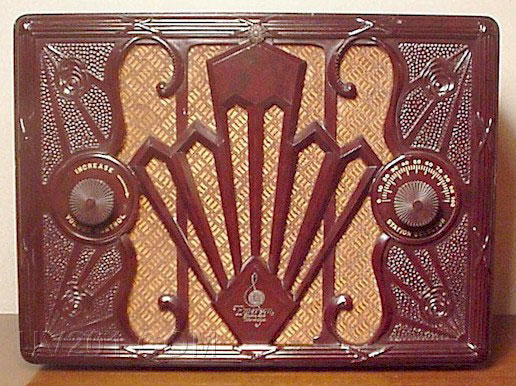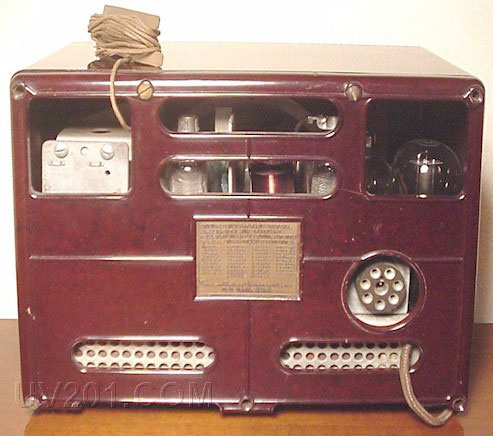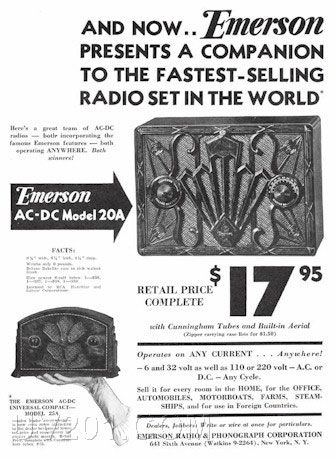|
Emerson Model 20A Radio |
||
|
|
||
| This is a four-tube Emerson
Bakelite-cased radio introduced early in 1933. The circuit was a conventional TRF design, using a type 39 tube as RF
amplifier, a type 36 as detector, and a type 38 as the audio
output. A diode-connected type 37 was used as the rectifier for AC
use. There was also a wood-cased radio using this chassis (the
model 25A). A multi-pin connector on the back allowed an external vibrator-type power supply unit to operate the radio from 6 or 32 volt storage batteries (for farm or automotive use). Jumpers in the power plug configured the tube filament wiring for 6 volt parallel operation. Without the jumpers, they were in series for 32 volt DC or 110 volt AC-DC operation. The set could operate on 220 volts with the use of a resistor line cord. A large dropping resistor is mounted under the chassis (note the ventilation holes). The original cable power connector had male pins, a dangerous (and today, illegal) configuration when using AC line power. This was changed on later models, and the one shown here has had a conventional line cord installed. In later versions of this radio, the tube lineup (39, 36, 38, 37) was replaced by types 78, 77, 38, and 1V, respectively. It was available with the power connector as the model 420 and without the connector as model 415. Some sets used the 6D6 and 6C6 tubes instead of the 78 and 77. All later versions used a resistor line cord rather than the under-chassis resistor as heat was apparently a problem with these. One radio book identifies this radio as a model "LA". This is actually a reference to the chassis type, and not the model number. Another book shows it as a "21A". This, too, is incorrect. |
||
|
|
||
|
|


